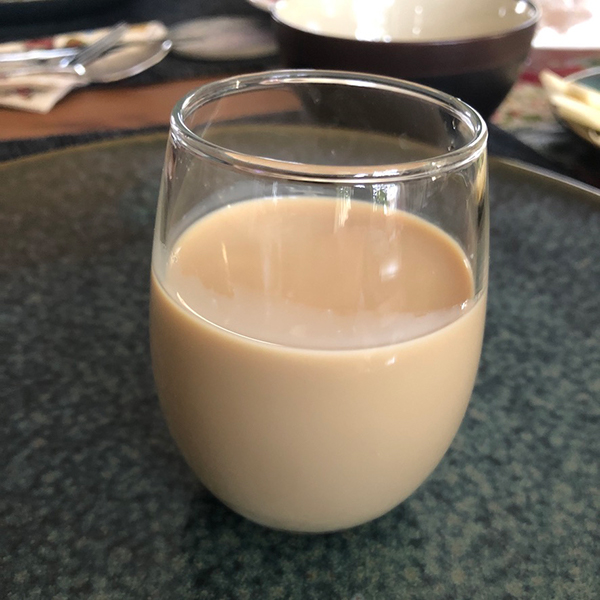Much as Americans enjoy eggnog in the winter, Chileans have a milky, alcoholic drink for the holidays: cola de mono (literally “monkey tail”). You’ll often hear it shortened to colemono. (Various anecdotes are circulating online around the origin of the name–I won’t go into those here.)
Unlike eggnog, there are no eggs involved (whew!). Instead you get an iced drink of whole milk, seasonal spices, coffee, and condensed milk. And liquor for buzz.
I’ve only had this drink a few times in my life. Although my mom is a master chef, she’ll typically acquire colemono from that one person who knows how to make it well. And finding someone in New Jersey where she lives can be tough. Meanwhile, here I am newly residing in Massachusetts; I haven’t got a hook-up like that.
When I pinged my cousins on Whatsapp to ask how actual born-in, raised-in Chile people make this drink, I was directed to this recipe, provided by Chilean cocinero Alvaro Barrientos Montero:
I’m so happy to have discovered him–this YouTube chef is radiant. Because of the difficulty of getting colemono, I’d always assumed it was some delicately balanced potion that had to simmer under a full moon, blessed by magic words and the proper hand signals. So it was great to have Alvaro guide me along as I whipped up the drink on the stove.
In Santiago de Chile, the Christmas week has seen temperatures in the 90s Fahrenheit. Meanwhile, I’ve had relatively comfortable temperatures in the 30s. (For me, “comfortable” means I don’t cry frozen tears when I walk the dog.) Yet somehow, this iced drink feels perfect for either the northern or southern hemisphere.

Because the YouTube video does not list them, I’ll provide the ingredients here in English, but for instructions, please watch Alvaro; this is his recipe and I suspect non-Spanish speakers will still be able to follow him along:
- 1 L whole milk
- 1/2 cup light brown sugar
- 1 cinnamon stick
- 2 pieces of orange peel
- 1 T nutmeg
- 2 whole cloves
- 2 T vanilla
- 1 can condensed milk
- 2 T instant coffee (he says Nescafé, but I had Folgers on hand)
- 1 cup aguardiente (or pisco or rum)
I used pisco, a grape brandy. Chileans and Peruvians are bitter rivals regarding who “owns” pisco, in relation to both its historical origins and which country has the right to market their product as “pisco.” (See links at bottom of post.) So whose product did I use? I used what I found in our liquor cabinet, a gift from extended family visiting from Chile: Peruvian-based Tabernero’s Pisco Colección Privada Mosto Verde Quebranta. Kind of a lucky compromise.
Pro tip: Taste your pisco neat! This particular pisco had some refined floral notes.

After pouring the final concoction–sans magic spells–through a sieve multiple times, I stored it in the fridge a few days prior to the holiday. On Christmas, I poured out this lovely coffee-colored drink. It tastes a bit sweet, like a dessert, but with that dangerous, grown-up bite from the pisco.
My mother–keeper of good taste–exclaimed, “Súper rico!”
I was so nervous about attempting this drink, and it was rewarding to find that even I, a novice in the kitchen, could make something that reminded me of family. If you’re seeking to try it out yourself, let me quote Alvaro in saying, “No tengas temor!”
Additional Reads
“Pisco: A Complete Guide to the Brandy From South America,” Eater, October 6, 2015: An overview of the differences between Peruvian and Chilean pisco.
“Sour Grapes: The Pisco War,” JSTOR, November 17, 2019: A fascinating discussion of the impact of “geographical indications”, defined as “global intellectual property rights for cultural products you can eat and drink.” Peru has made headway in becoming the official source of “pisco.”
“Tale of a ‘tail: The pisco sour,” CNN, Oct. 2, 2018: You can watch a brief animated video on CNN talking about the pisco feud between Chile and Peru.